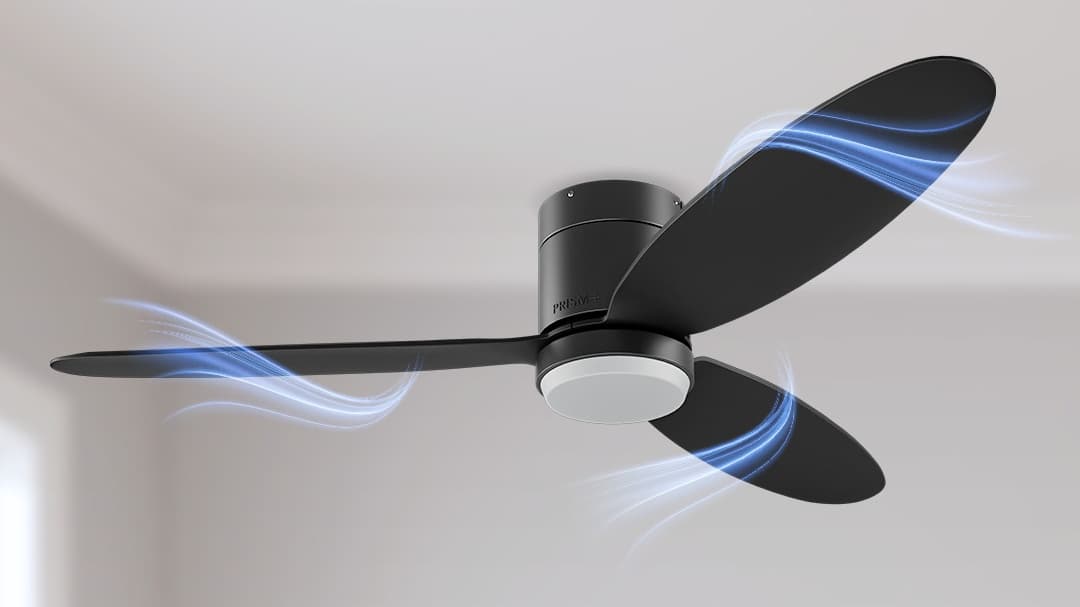3 Tips For Selecting The Right Ceiling Fan

A perfect ceiling fan can boost the comfort and style of your home. However, with so many options available, determining a fan which is best suited to your needs can be challenging. Keep reading to learn about three tips that will help you choose the perfect ceiling fan.
1. Pay Attention to the Design and Features
Ceiling fans are available in a wide variety of styles, from classic to contemporary, ensuring that you can find one that complements your home décor. When selecting a fan, consider the overall design theme of your space. For a traditional look, fans with ornate details, wooden blades, and antique finishes are ideal. For modern or minimalist spaces, opt for fans with clean lines, simple designs, and sleek materials like brushed nickel or chrome.
In addition to aesthetic considerations, modern ceiling fans come equipped with a range of features that enhance functionality and convenience. Many fans now include integrated lighting, which can eliminate the need for additional ceiling fixtures. Look for models with energy-efficient LED lights that offer both bright illumination and long-lasting performance.
Ceiling fan remotes and smart technology are also becoming standard in many ceiling fan models. Remote controls allow you to adjust fan speed, lighting, and even reverse the blade direction from anywhere in the room. Smart fans that connect to home automation systems can be controlled via smartphone apps or voice commands, providing unparalleled convenience and customization.
2. Consider the Room Size and Ceiling Height
When selecting a ceiling fan, the size of the room and the height of the ceiling are crucial factors to consider. A fan that’s too small for the room won’t circulate air effectively, while one that’s too large may overpower the space.
For rooms up to 75 square feet, such as bathrooms or small bedrooms, a fan with a blade span of 29 to 36 inches is ideal. For spaces between 76 and 144 square feet, like most bedrooms and kitchens, opt for a fan with a 36 to 42-inch blade span. Larger rooms up to 225 square feet, such as living rooms or large bedrooms, can benefit from a fan with a blade span of 50 to 54 inches. If your room exceeds 225 square feet, consider a fan with a blade span of 56 inches or more, or even multiple fans.
Ceiling height also plays a significant role in fan selection. For ceilings lower than 8 feet, a flush mount or “hugger” fan is recommended to provide adequate clearance while maintaining safety. For standard 8 to 9-foot ceilings, most fans come with a downrod that allows for proper installation height. In rooms with ceilings higher than 9 feet, an extended downrod is necessary to position the fan at the optimal height of 8 to 9 feet above the floor, ensuring efficient air circulation.
3. Choose the Right Motor and Blades
The motor is the heart of your ceiling fan, determining its efficiency, noise level, and durability. When evaluating motors, look for high-quality, energy-efficient options that offer reliable performance with minimal noise. AC (alternating current) motors are common and typically cost-effective, while DC (direct current) motors are quieter, more energy-efficient, and provide greater speed control.
Blades also play a crucial role in your fan’s performance and aesthetic appeal. The number of blades can impact functionality and style. Traditionally, fans with five blades are considered quieter and more balanced, while three-blade fans often have a sleeker, modern appearance and can move air more quickly. Blade material and finish are also important considerations. Wooden blades with a natural finish can add warmth to a room, while metal or plastic blades might be better suited for industrial or outdoor settings where durability is paramount.
Summing Up
Taking the time to evaluate room size, motor and blade quality, design features, and energy efficiency will ensure that you make a well-informed decision that you’ll appreciate for years to come.
